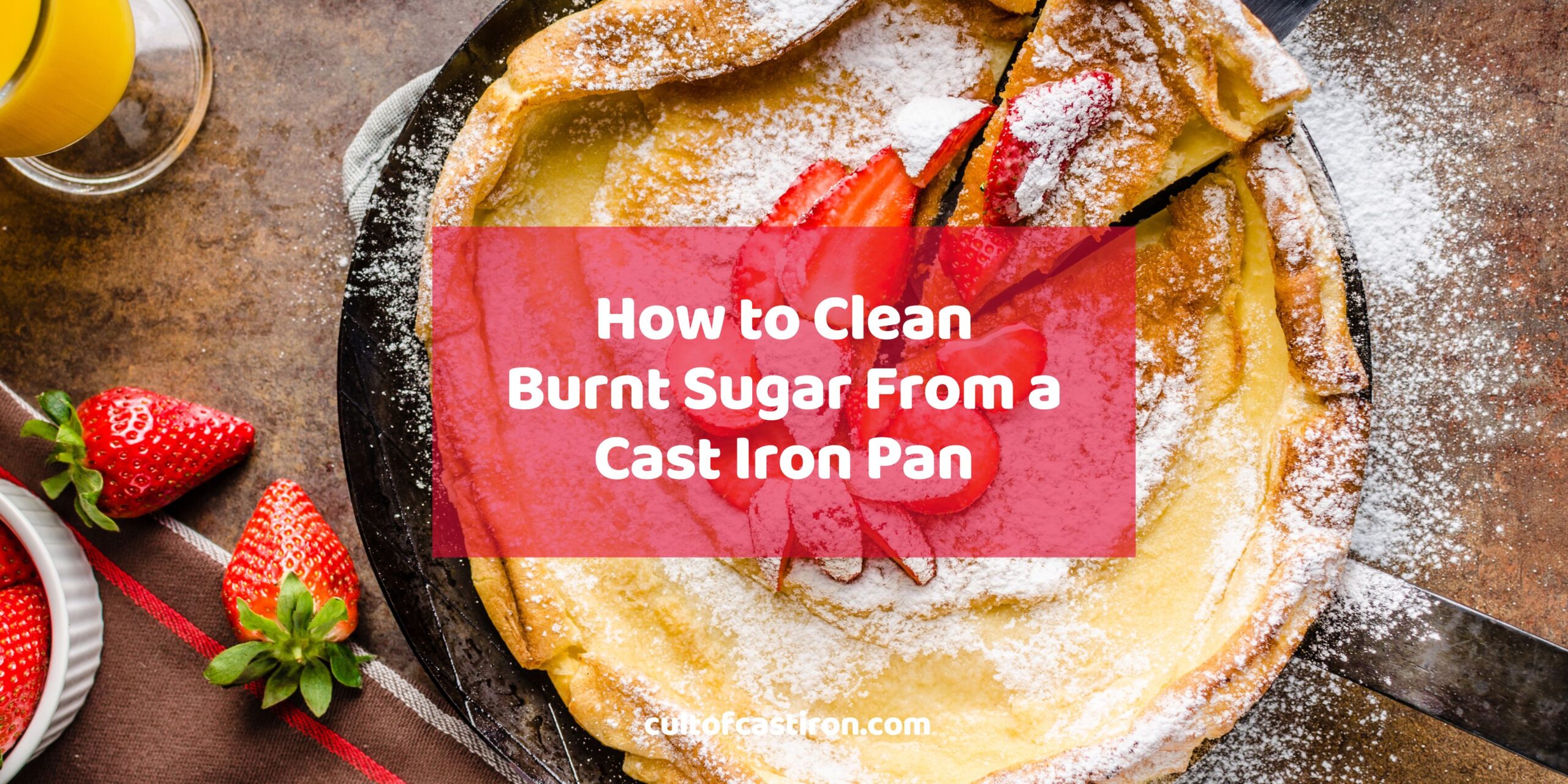Burnt sugar that is stuck on a cast iron pan is a pain in the ass to remove. I should know. As a Filipino man who stubbornly cooks longanisa hamonado on his cast iron pan almost weekly, I am well aware of this problem, and will even continue cooking longanisa after the fact.
With that said, there are times when I regret cooking sugary stuff on my pan (usually, while I toil away scrubbing burn sugar off the pan), but I’ve now dealt with it many times that it no longer poses a serious challenge to me or my skillet’s seasoning.
In this guide, I’ll teach you different methods of removing burnt sugar while still protecting the seasoning of the pan.
Why Burnt Sugar Is Bad For Cast Iron Pans
Stuck on burnt sugar is not only irritating to deal with, but it can also affect your pan and your meals in negative ways.
It can damage your seasoning
Seasoning is what makes cast iron pans non-stick and resistant to rust. Burnt sugar can adhere strongly to the surface of the pan, and in the process of trying to remove it, you may end up scraping off some of the seasoning. This damage exposes the bare metal, making it prone to rust and stickiness, requiring re-seasoning to restore its surface.
It can leave an acrid taste on your food
Sugar burns at a relatively low temperature, and when it does, it creates a bitter, unpleasant flavor. This burnt residue can infuse into your next meals cooked in the pan, affecting the taste and ruining the effort you put into your cooking. Maintaining a clean cooking surface is essential for the best culinary results.
4 Ways to Remove Burnt Sugar From Cast Iron Pans
There are many ways to remove burnt sugar from your cast iron pan. And fortunately, most can be achieved with common household items and a lot of elbow grease.
1. The Boiling Water Technique
Fill the pan with water until the burnt residue is covered. Bring to a boil, and let it simmer for a few minutes. The heat and water will loosen the sugar, making it easier to scrub away with a wooden spatula or a chainmail scrubber without harming much of the seasoning.
2. The Salt Scrub Technique
Coarse salt acts as an excellent abrasive that’s gentle on the seasoning. Sprinkle a generous amount of salt over the burnt area, add a little water to form a paste, and scrub with a stiff brush or cloth. The friction created by the salt granules will lift the burnt sugar without the need for harsh chemicals.
3. The Baking Soda Paste Technique
Mix baking soda with water to create a paste and apply it to the affected area. Let it sit for a few minutes to loosen the burnt sugar. Baking soda’s mild abrasive action and alkaline nature help remove the residue with minimal damage to the pan’s seasoning.
4. The Hydrogen Peroxide Technique
Hydrogen peroxide is a gentle oxidizer that can help in removing burnt sugar. Pour a small amount onto the burnt areas and let it bubble for a few minutes. This method can help lift the sugar residue, making it easier to scrub off. However, it should be used sparingly as overuse might affect the pan’s seasoning.
What You Can’t Use to Remove Burnt Sugar From Cast Iron Pans
Since you have to protect the seasoning of the pan, the following cleaning agents are off limits when it comes to removing burnt sugar.
Vinegar – with its high acidity, can indeed help dissolve burnt sugar. However, it can also eat away at the precious seasoning of a cast iron pan and, over time, cause damage to the metal itself if used excessively or left on for too long.
Bar Keeper’s Friend (BKF) – this popular cleaning agent is made primarily with oxalic acid, that is mild enough to the skin, but is strong enough to dissolve your cast iron’s seasoning. Even the company itself strongly advises against using BKF on regular cast iron cookware.
Conclusion
Proper care and maintenance of cast iron cookware are essential for its longevity and performance. Understanding how to effectively remove burnt sugar and other residues without damaging the pan’s seasoning will keep your cast iron in prime condition for years to come.
To delve deeper into cast iron cooking, check out the Cult of Cast Iron blog for valuable insights and tips.

Miguel is a cast iron enthusiast from Cavite, Philippines. He works in the digital marketing field as a content marketing strategist. On the side, he manages a small online bookstore and tends to his plants.

